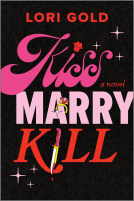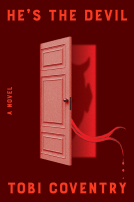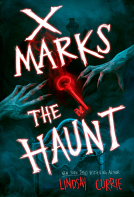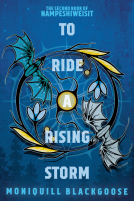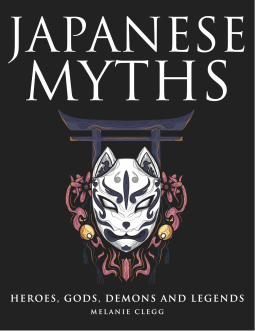
Japanese Myths
by Melanie Clegg
This title was previously available on NetGalley and is now archived.
Send NetGalley books directly to your Kindle or Kindle app
1
To read on a Kindle or Kindle app, please add kindle@netgalley.com as an approved email address to receive files in your Amazon account. Click here for step-by-step instructions.
2
Also find your Kindle email address within your Amazon account, and enter it here.
Pub Date Sep 14 2023 | Archive Date Sep 21 2023
Amber Books Ltd | Amber Books
Talking about this book? Use #JapaneseMyths #NetGalley. More hashtag tips!
Description
Japan’s origin story dates from the eight century CE, written in the Kojiki and Nihon Shoki. From the first creation of heaven, earth and the Japanese archipelago from the tip of a spear by the gods Izanagi and Izanami, Shinto and Buddhist traditions make up the cornerstones of Japanese mythology. Japanese Myths provides a clear, concise introduction to this fascinating if little- known world. Find out about Hachiman (八幡神), the mighty god of war and the divine protector of Japan and its people. Marvel at Fujin (風神), the god of the wind, a popular but terrifying demon – his bag of air is thought to move all the world’s winds, and he is a powerful force of nature alongside his brother, the thunder god Raijin. See Hotei (布袋), the “Laughing Buddha” and one of the most well-known symbols of Buddhism – rubbing his belly is said to bring good luck. And enjoy the myth of Shita-kiri Suzume, or “Toung-Cut Sparrow”, which explores the effects of greed, friendship and jealousy. Illustrated with 150 photographs and artworks, Japanese Myths is an accessible, entertaining and highly informative exploration of everything from the kami holy spirits venerated in Shinto religion to the divine origins of the Japanese imperial family.
Available Editions
| EDITION | Other Format |
| ISBN | 9781838863180 |
| PRICE | £24.99 (GBP) |
| PAGES | 224 |
Links
Available on NetGalley
Average rating from 46 members
Featured Reviews
 Dan O, Bookseller
Dan O, Bookseller
My thanks to both NetGalley and the publisher Amber Books for an advanced copy of this book on the lore, gods and goddesses and creatures of ancient Japan, and their continuing influences today.
People and countries need their myths for a lot of different reasons. One to explain things, where they came from, where they are going and why things are the way they are. Stories from the past explain the reasonings of today. People might treat each other in good or bad ways depending on the myths of their country. Look at America, a young country whose recent history is not that far away, and yet the 1950's in the United States is looked at as an Eden, thought it was far from it. Myths are as encoded in DNA as are the proteins that give us our traits. For good and for bad. To understand a people, it helps to know where they came from. The fact that stories are so good it only a plus. Japanese Myths: Heroes, Gods Demons and Legends by Melanie Clegg looks at the origin tales of the Japanese people and the Ainu natives and tells how the the land, the people and the cultures were developed and formed, by the stories they share.
The book begins with an explanation of the two oldest written works on the creation myths of Japan, the Kojiki and the Nihon Shoki. These were adapted from earlier oral myths that had been passed down through the centuries. What Clegg points out is that these were the stories that were chosen to be written down, others have been lost to time as there is no record of them. Clegg also looks at some of the stories by the Ainu natives, a group with there own share of problems in Japan. From there were learn the stories, the couple separated by death and a rock, who created the early pantheon of gods. The heroes who fought for justice, or honor, the demons who haunt the hillsides. Readers learn about the different ages of Japan, and how certain myths have been adapted to explain certain parts of Japanese culture, the rise of military during the early part of the last century. And also the effect on culture with characters from famous manga or anime shows coming from classic tales, along with many of the creatures in Pokémon.
A very informative and lavishly illustrated tome to the myths of Japan, and their cultural impact. The writing is very good, always instructive, and well-researched, and yet not dull or sounding like a lecture. Clegg has a real gift in making the stories interesting, answering questions, and finding art that fits well with what Clegg is describing. The stories are fascinating and one doesn't have to be a scholar of mythology to either understand or be taken in by the stories. Though a familiarity would be helpful. As would a familiarity with manga, anime, and movies as many of those that Clegg writes about will be familiar to most fans of these subjects, especially readers of the Usagi Yojimbo stories by Stan Sakai.
A book that should be on the shelf of those interested in the mythology of Japan, that goes without saying. However this would also be a good book for role playing game designers for idea, and fantasy writers also for ideas. Manga and anime fans will also enjoy this book, which would be a perfect Christmas gift for many fans.
Thank you, Netgalley and Amberbooks, for this ebook, Arc.
Publish date: 9/13/2023
As someone who reads a lot of fantasy, manga, and translated works. I was aware of some of the myths talked about in Melanie Cleggs book, Japanese Myths.
Though the history behind them and how they have adapted, I had little to no knowledge.
Clegg starts at the beginning by explaining the historical background and introducing the reader to the Kojiki and the Nihon Shoki, the oldest written mythologies in Japan. This allows anyone to jump into Japanese Myths and begin to dive into the mysterious stories that influence culture and even fuel propaganda in later years.
This book would be a great reference tool for homeschooling parents or a companion to a textbook for high school students. Who may want a deeper understanding of mythology and its influence in the modern era. There are many add-in segments that can influence the reader to research further on their own. For example, there is a mini reference section on Japanese translation, listing many individuals who pioneered and further spread the reach of Japanese mythology. Laying the groundwork for the influence it has today in movies, shows, and books. I myself enjoyed hearing the different stories and pinpointing works that I have seen then in. For example, in the show Teen Wolf, one of the seasons features the Oni and Kitsune. I enjoyed learning the orgins of in Cleggs' work.
Not only is this book filled with historical references but is filled with beautiful pictures that allow the reader to see how these myths are intergrated into Japanese culture along with photographs of artwork inspired by these heroes, Demons, gods, and the Legends that have been passed down orally for years. Clegg also touches on Ryukyuan, Chinese, and Indian stories that are interconnected into Japanese lore. I had no idea that Buddhism played such an influential role.
Overall, I think this was a great starting place for dabbling in Japanese mythology. The writing was clear and concise and used great examples and pictures. Allowing people who have never been to Japan to experience how entwined it is with their culture.
https://app.thestorygraph.com/reviews/83626921-12c9-42f2-bd64-a77d7d2c6041
When I picked up this book, I expected it to be a layman's guide to Japanese myths, maybe even like a Scary Stories to Tell in the Dark collection of short stories explaining them. Looking back, I have no idea why I thought that.
It's actually better than that. Clegg's book is essentially a textbook-level comprehensive view of how Japanese belief has changed with its history, and it's an excellent reference. Will I read it for fun on the beach? Absolutely not, but when I see something in a movie that feels like I should remember what it is, I'll be glad this book is on my shelf to reference.
I did receive an advance reader copy from NetGalley, but the opinion is mine!
 Media/Journalist 188366
Media/Journalist 188366
Studying mythology provides insights into Japanese cultural identity and the values and traditions behind it. Comprised of oral folk tales, Shinto stories and Buddhist parables, these myths have their roots in Japan, China and India. Mythology often serves as a source of sharing universal truths about morality, psychology and spirituality. By exploring myth, we not only gain a deeper appreciation for the past but also foster cross-cultural understanding and preserve cultural heritage for younger generations.
Japanese Myths is a visually pleasing guide with over 150 graphics, illustrations and photographs. Author Melanie Clegg is a freelance translator and holds a BA (Hons) in Japanese Studies from the University of Oxford. The book opens with key creation myths and with explanations of how these have been used to legitimise the ruling elite. These sections are drawn from The Kojiki and Nihon Shoki, the oldest chronicles that provide accounts of Japan's history and mythology, including significant events and the genealogies of early rulers.
In addition to outlining the overarching mythology collected in official chronicles, this guide also summarises notable deities, ghosts, creatures, parables, legends and folk tales. Each section succinctly provides cultural context and their significance today. The publishing space for Japanese short stories, myths and tales is crowded with previously published collections, but this book by Clegg is a fine contribution. What sets this book apart is Clegg's ability to blend scholarly research, travel writing and sociological analysis into one accessible and charming guide. Her summaries reflect her expertise and experiences of living in Japan, offering readers a glimpse into the nuances of Japanese culture without overstepping into personal narrative.
These myths show the origins of significant rituals, festivals and artistic expressions that continue on today. This book would be an excellent read for those making their first trip to Japan. For example, in the section on Tengu, it describes how "By the Edo period, they were regarded more as spirits that could be placated with the right rituals. Tengu might even be worshipped as beneficial kami and the deities of sacred mountains. The Shimokitazawa Tengu Matsuri, or Goblin Festival, celebrates Setsubun with a procession that includes a float featuring a huge tengu mask and people dressed up as a fearsome crow-like tengu and a red-nosed tengu."
The reader will appreciate the further explanation of how these tales were spread, such as through oral traditions or special parties for sharing ghost stories. Younger readers might enjoy that the text includes a collection of stories from online publishing ('Creepypasta') and modern curses. These additions show the enduring appeal of spooky stories across generations. I was especially moved by the sections relating to ghosts, which included stories about mothers who returned from the dead to feed their still living children and the modern reports of ghosts appearing after the 2011 Tohoku earthquake and tsunami.
"I suppose it’s not that strange. So many people died in the disaster – some of them must have unfinished business. I’m sure it was a ghost that I saw. I’m not scared anymore. If I saw another customer dressed in winter garb waiting for a ride, I’d pick them up and treat them like any other passenger."
This book includes a number of translations of poems and I'm uncertain if these poems were translated by Clegg or another individual because there is no specific attribution underneath. There is a full page providing short biographies of notable translators of Japanese works, such as Lafcadio Hearn and Yei Theodora Ozaki.
Although this book covers a number of subjects that might already be familiar to those with a strong interest in Japan, it expands on these to highlight their enduring significance. Some profiles of legendary individuals touch on sensitive issues, which are a "a powerful reminder of how myth and legend can be manipulated by those who seek to use them to disseminate particular ideologies, and of how deep-rooted and insidious such beliefs can become." Significantly, this book is also distinguished from other English language publications by dedicating a fair amount of space for Ainu and Ryukyuan history and myths. These are not separated into their own section, but rather woven into the book which is mainly divided by theme.
Japanese Myths is a beautifully illustrated reference guide which covers the beliefs, customs and historical events that form the basis of Japanese society, and this is what makes it worth purchasing beyond a separate collection of translated myths. Due to its lovely presentation, this book would make a lovely gift for someone with a developing interest in Japan.
This book was provided by Amber Books for review. Amber Books is a an independent UK publisher based in London which publishes illustrated non-fiction for adults & children.
Readers who liked this book also liked:
Mary Pauline Lowry
General Fiction (Adult), Humor & Satire, Mystery & Thrillers



